Look, I wasn’t going to write about this. People were asking me about AI 5 years ago and I wasn’t interested then, and I’m not that interested now. It’s a lot of smoke and mirrors and obfuscated exploitation.
But then a content designer wrote to me looking for guidance about navigating their career and learning pathway going forward now with tools like ChatGPT in the picture.
Their boss had recently suggested that they might consider becoming more of a design “generalist” rather than a content “specialist”, since the robots are going to do the writing now, anyway, haha.
It’s an interesting frame on the conversation. Being a UX writer is specialized in a way, I suppose — there are nuances to writing usable interface copy that you have to study and learn in the particular. But that’s a small slice of the content pie, overall.
Being a UX designer focused on content doesn’t feel specialized to me. The website, the app, the services … they’re all made of content. I’d argue that most companies today are made of content — with everything increasingly etherealized and ephemeralized and delivered digitally, companies exist as complex garments woven of concepts, meaning, messages, and knowledge. Apps and sites are made of code and content. The design gives it form, sure, but form, as I’m fond of saying in this context, is merely the shape of content.
They also asked me how deep content design and content strategy can be as disciplines, and whether there would be enough depth there to still make a career out of them if AI can in fact do the writing.
One of the things my boss mentioned was that in a few years, AI will take over a lot of the work UX writers do.
I challenged: Even if AI could write great interface copy and marketing copy, how much time does a content designer actually spend on that writing? Hands-on-keyboard, tappa-tappa-tappa writing?
If you’re a UX writer and look at your time as a pie chart, writing is unlikely to be more than half of that chart; probably much less. How could you even know if what the AI wrote is good, or useful, or on brand? That users can and do understand it? Those things are a writer’s job, but they aren’t, in and of themselves, what people tend to mean when they say “writing”.
Content design’s depth is a depth of craft. Asking how deep content design can go is kind of like asking how deep woodworking can go. There’s always more to master, and you can always get better at doing what you’ve done before. Now, that said, I have a somewhat narrow view of content design that doesn’t align with everyone’s understanding of it. I think it’s primarily and best understood as a form of user-centered writing. It’s a way to do the writing, and a really good one, for digital content. That doesn’t mean it’s small, far from it — as I’ll be arguing further shortly, writing is a big idea that isn’t just typing! But content design as taught and practiced today also isn’t the only possible approach to creating digital content, and isn’t the only content discipline, either. Lots of content folks move into content operations or content strategy or information architecture or product management as they increase in experience, but not necessarily. So whether it’s a depth of craft, or depth from expanding into other disciplines, there’s more out there.
Comparatively, I would say that content strategy has a depth of scope. You can create a content strategy for a blog with one author, or a content strategy for an entire enterprise organization. Ideally, you’re creating sets of nested strategies that connect to that larger enterprise strategy, which is of course inexorably connected to the overall business strategy. So, if AI can replace content strategy, then bosses everywhere are out of a job, too. 😂 Content strategy is broad and necessarily impacts the entire organization, often has very little to do with day-to-day writing work, and is generally practiced at a high-level by people who study business strategy, facilitation, and other “working with stakeholders” kind of stuff. Unless they start letting the AI make all of your business and content decisions and everyone agrees to abide by them, you’ll always need content strategy.
We exchanged a few further emails, and after I had asked them to imagine that pie chart, they shared that they felt that…
…a lot of my time does go into actual writing. I am the first and the only UX writer in my agency right now, so perhaps I don’t have a full view of what else a content designer might do. A few non-writing tasks that come to mind are – building voice and tone frameworks, aligning on a glossary for an org/product and usability testing. What am I missing?
Sure, those big things like voice and tone frameworks are “non-writing work”, but if we want to be pedantic, those things might be more content strategy work, anyway. I suggested looking even closer at how they were spending the time that they think of as writing. What is that time made of? Is it going from zero to immediately typing out exactly the text that’s needed? That would be quite the trick! Even the AI needs a useful prompt based on some sort of need or request to do its writing.
We have to look and think more carefully about how our time gets spent if we want to advocate effectively for our value. Are we spending time reading and understanding and synthesizing things? Talking to and working with fellow designers? Ensuring what we’ve written aligns with house/company style? Ensuring it’s consistent with other parts of the experience? Doing competitive research? Doing information architecture work to determine how to name and label a new component to make sure it’s coherent with the rest of the product naming conventions? Interviewing users? Interviewing stakeholders? Pitching and defending our work and the design choices (which can be word choices) we’ve made?
Even in roles where I was primarily “just” a UX writer, I’d be surprised if literally writing the literal final text for interface components took more than 15% of my time in a given week. All that other 85% can’t be done well by a computer, not now and likely not ever in the future.
Overall, I reject the idea that the UX writing role is going to be largely automated, even the writing portions of it. I think you might find yourself clicking a button to generate options for button text from inside Figma more often, sure, but that doesn’t obviate the work of understanding if that text is really the best text for the job, which is what UX writing is really about, anyway. So if the most tedious part of the job — generating text options — gets automated? Hooray! We can all work faster and more efficiently, and maybe even a little more creatively.
Finally, I offered that design systems might be a good way to think about this. Design systems have “automated” a lot of what UX designers used to spend their time doing, like laying out notification messages or modal windows or forms, and now they choose from already-built components. They can even do auto-layout of a lot of that stuff. So why are all the UX designers still employed? Because someone has to understand what components are needed, how to arrange them, to what end, for whom, etc. And those components all still need words on them, that have to be based on understanding both user needs and business needs, and cultural context, and brand voice and such. So we’ll always have work.
In closing, I of course had to advocate for the books. Because we’ve got to read the books, people! 😂 What a content strategist could or might do, or a content designer, is covered well in classic texts like Content Strategy for the Web, Content Design, The Content Strategy Toolkit, The Elements of Content Strategy, Content Strategy at Work, and many more. The stuff in those books is the good old evergreen stuff that will still be necessary however good at “writing” the AI gets.
Oh, and for the record, I did indeed write all of this myself. 💪🏼

